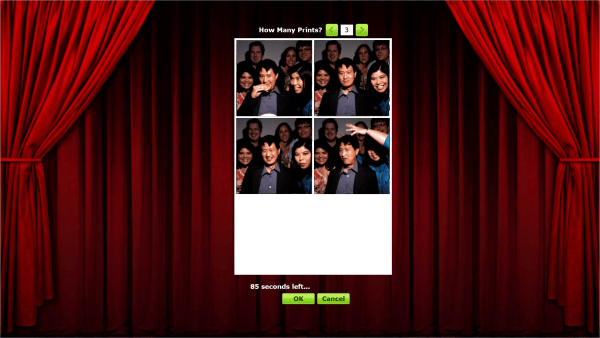
Not sure which keystroke you need? See our FAQ. Just make sure you choose the right button to press when you order! They work great for triggering popular photobooth software, such as DSLRbooth and Sparkbooth. Your computer will recognise the usbbutton as a keyboard, pushing the button will trigger the keystroke you select just as if it was being typed on a regular keyboard.
#Sparkbooth faq mac#
Our usbbutton uses a USB 2.0 connector, and will work with both Mac and PC.

Then I thought, why not see if anyone else would be interested in buying one? How does a usbbutton work? Despite searching online, I couldn’t find a simple arcade button that would trigger a ‘space’ keystroke for less than £100. What started usbbutton? The project behind usbbutton started when I was building a photobooth for a friend’s wedding. This entry was posted in computers, control, electronics. To output other characters, simply follow the vertical and horizontal traces to the board, and solder wires to those pads instead.
#Sparkbooth faq free#
The photo below shows wires (whose free end is to be connected to the switch) soldered to the pads required to output a space bar character. The keyboard, popples and plastic layers can all be replaced by an external switch and wires soldered directly to the circuit board. The chip (under the black epoxy potting on the bottom of the board) detects this electrical connection, and outputs the appropriate character over the USB cable. These traces are routed to the circuit board via a row of contacts under the front edge: When a key is pressed, a protrusion on the bottom of that key’s popple pushes the two layers of plastic together at this location: connecting one of the vertical traces to one of the horizontal traces. These layers of traces are separated by a small gap. Under this layer are two sheets of thin plastic, one with conductive ink traces that are (mostly) horizontal, and one with conductive ink traces that are (mostly) vertical. These ‘popples’ are the springs under each of the keys. When the top of the keyboard is removed, a sheet of silicone ‘popples’ is revealed.

Although this isn’t a solution suitable for even small scale production, it can work for a one-off prototype, like The Critic.īelow are several photos that show the process of opening the keyboard to extract and modify the circuit board. Despite the Teensy cost of $16, I saw an opportunity for cost savings by opening a standard USB keyboard and spending a few minutes to extract and reverse engineer their compact circuit board. His buttons emulate a keyboard, and contain an Arduino Teensy (only 0.7″ by 1.2″), which is a USB based AVR microcontroller. These photo booths are powered by Sparkbooth, which can automatically upload the photos to Facebook, Twitter, tumblr or other social media sites.

Among other applications, these USB buttons can be used as the shutter control of Mac powered Photo booths at public events. He has freely helped tens of people create their own buttons, but is now able to fulfill requests for preassembled units. I was inspired by the open source work of Pete at RasterWeb! and his recent effort to bring “ The Button” to a wider audience of busy or non-makers. The Critic measures 3″ by 2″ by 2″ tall, and was designed to fit conveniently within arm’s reach, beside your keyboard or mouse.
#Sparkbooth faq full#
The Critic is an indispensable tool for use when the document you’re editing is just so full of errors that your fingers begin to ache from holding down the delete key. At that point, the safety cover can be lowered, thereby deactivating the device. When connected to a computer via the convenient USB plug, it will begin to delete text, continually deleting until all the (presumably erroneous) text preceding the curser has vanished. This is “The Critic.” It’s the USB accessory version of a red pen: Once armed by rotating the red safety cover up, the device is activated by simply flipping the toggle switch.


 0 kommentar(er)
0 kommentar(er)
